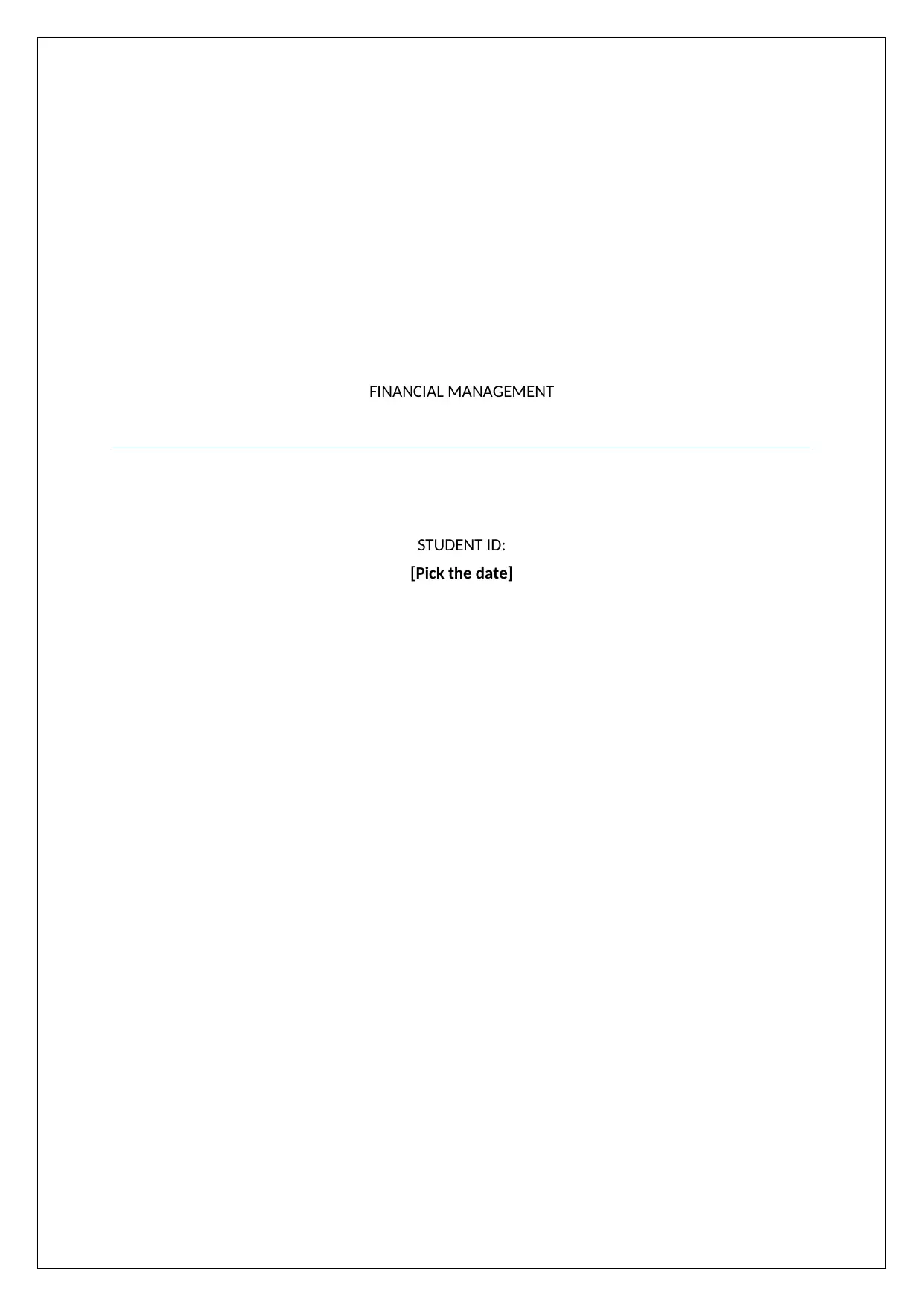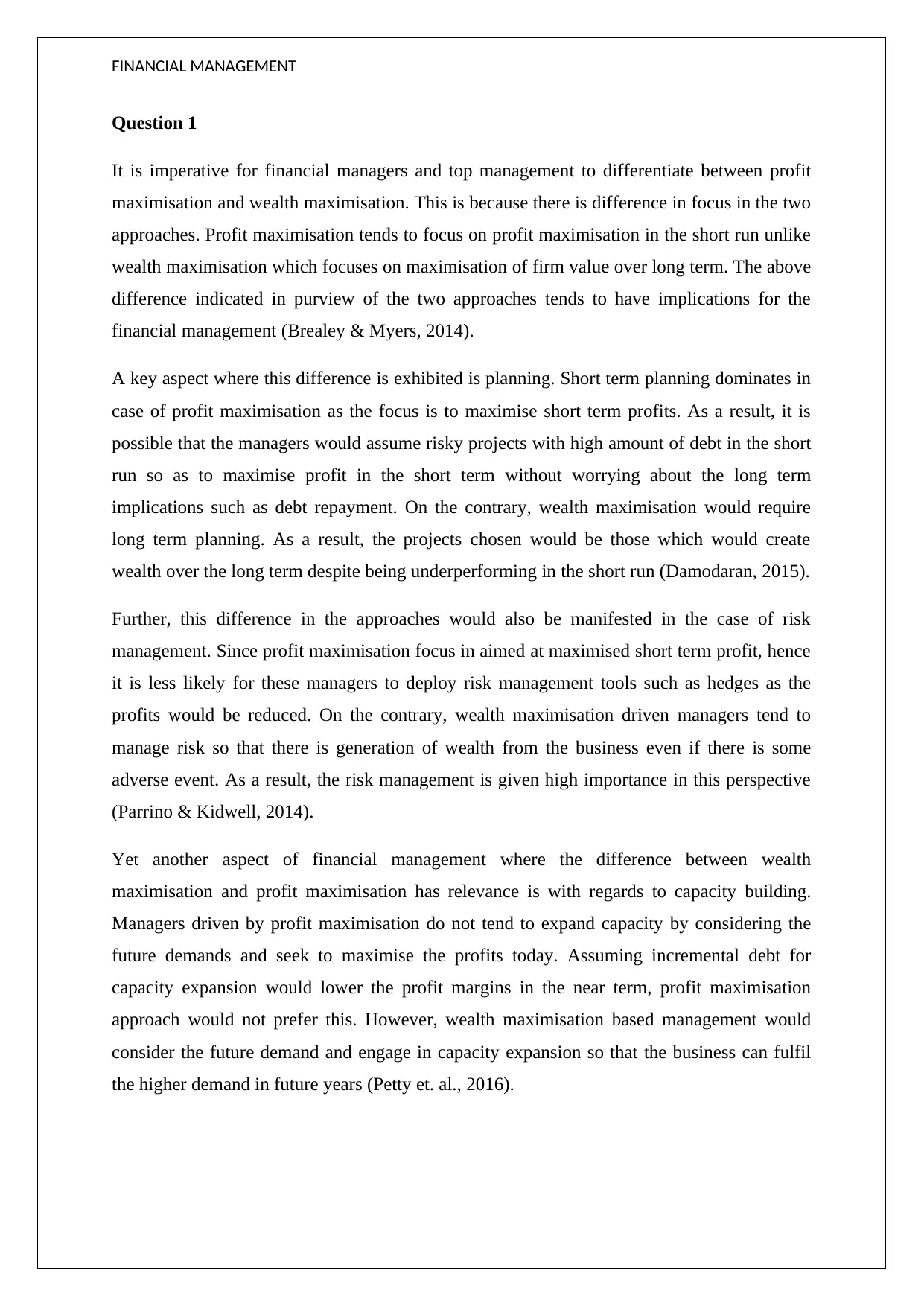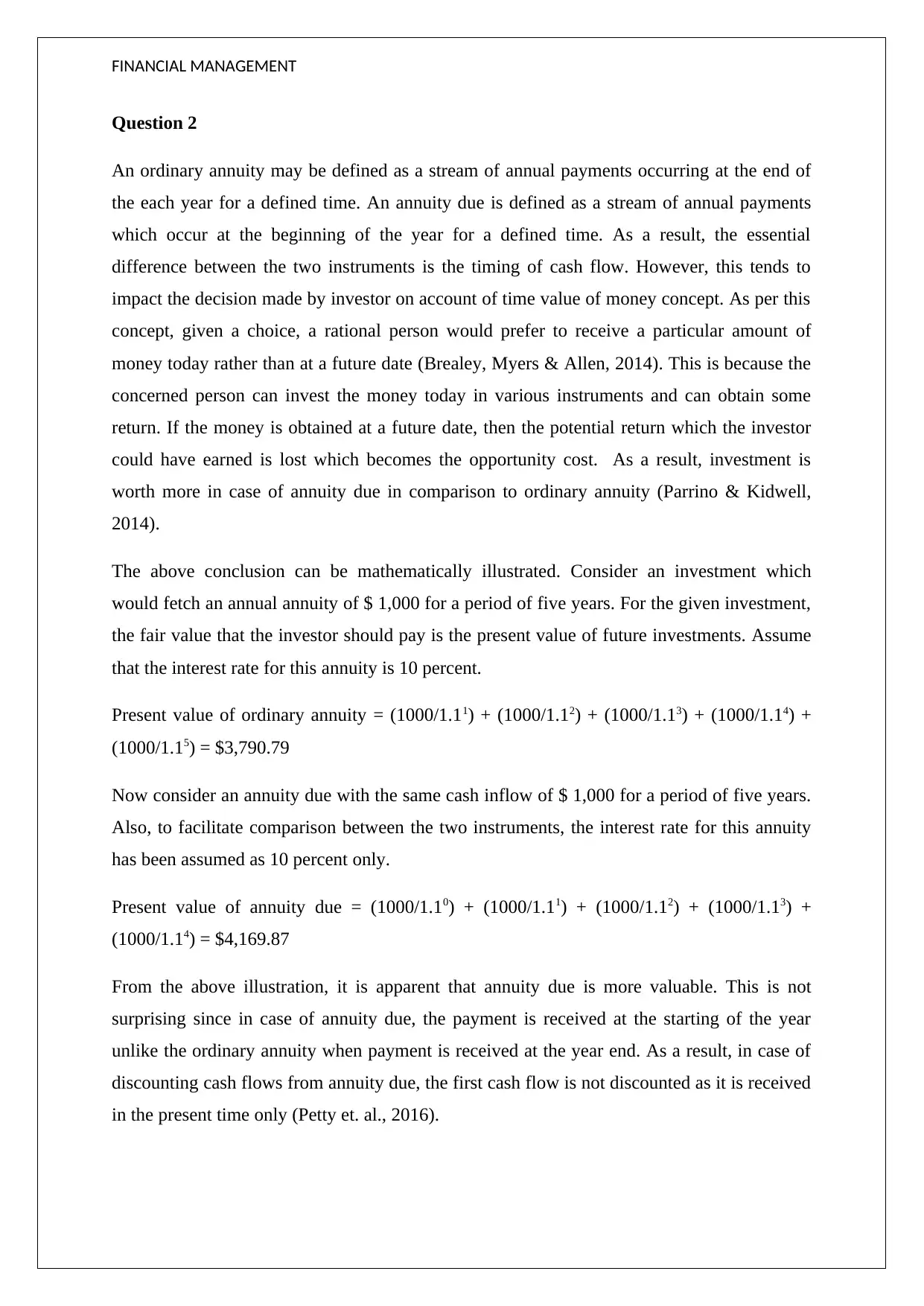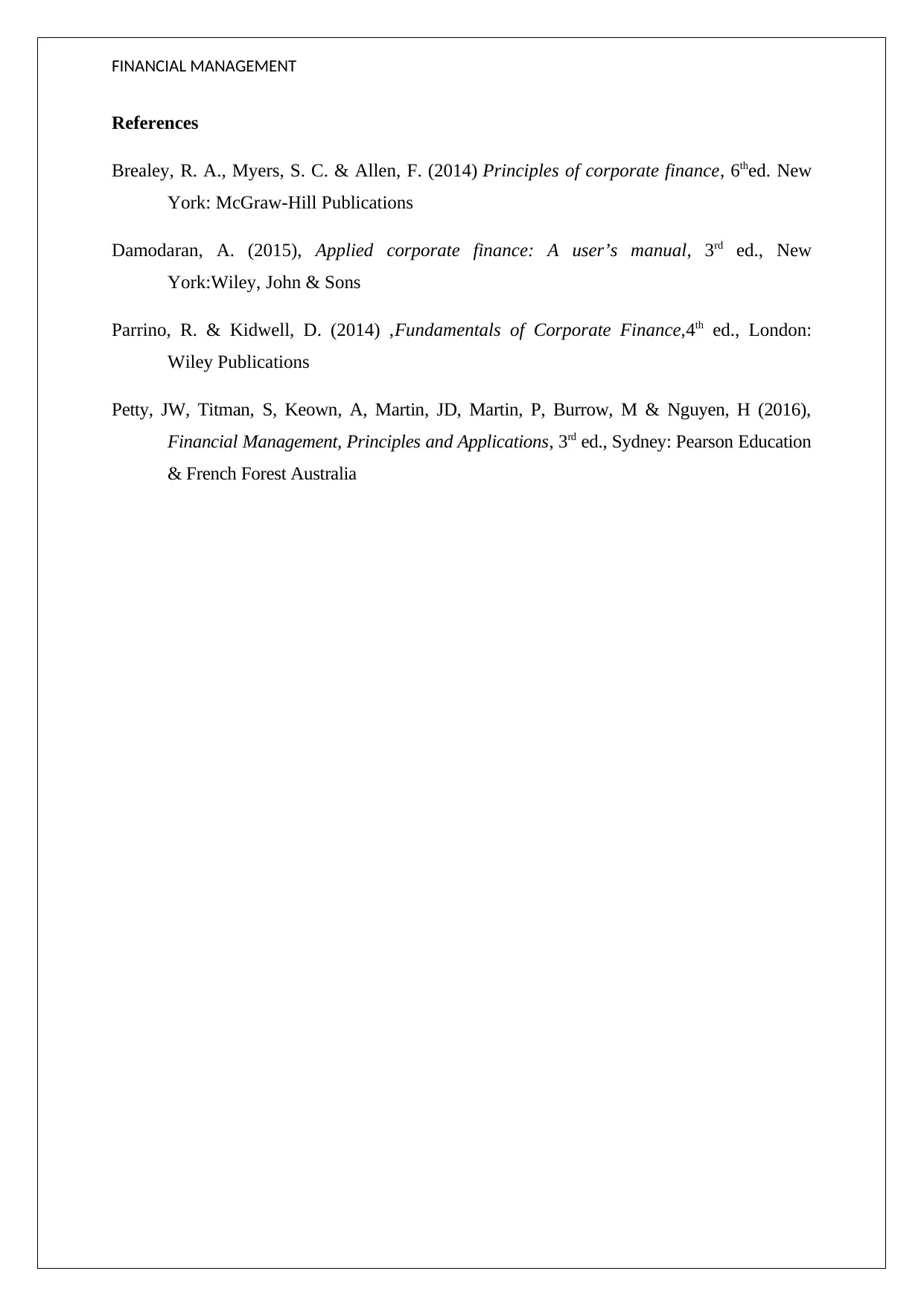Financial Management Assignment: Annuity Analysis Solution
VerifiedAdded on 2023/01/17
|4
|1010
|78
Homework Assignment
AI Summary
This financial management assignment explores two key questions. The first question differentiates between profit maximization and wealth maximization, highlighting their differing focuses and implications for financial planning, risk management, and capacity building. Profit maximization prioritizes short-term gains, potentially leading to risky projects and neglecting long-term considerations, while wealth maximization emphasizes long-term value creation. The second question compares ordinary annuities and annuities due, explaining how the timing of cash flows impacts investment decisions based on the time value of money. The solution demonstrates, through mathematical illustration, that an annuity due is more valuable because payments are received at the beginning of each period, rather than at the end, which allows for earlier investment and potential returns. The assignment uses relevant financial literature to support its arguments.
1 out of 4











![[object Object]](/_next/static/media/star-bottom.7253800d.svg)